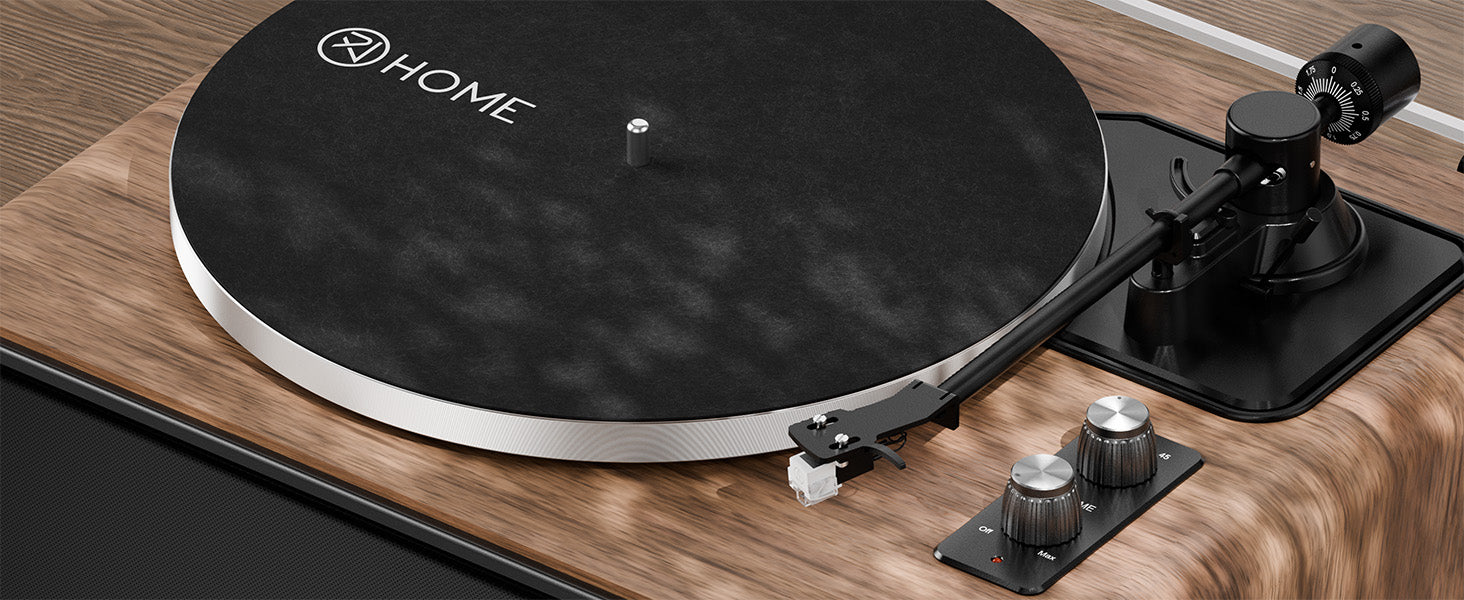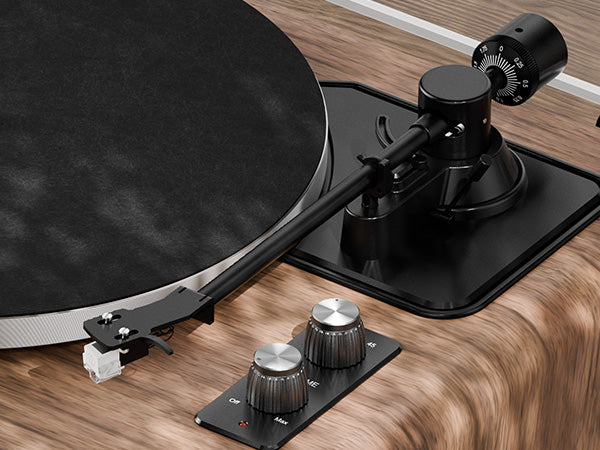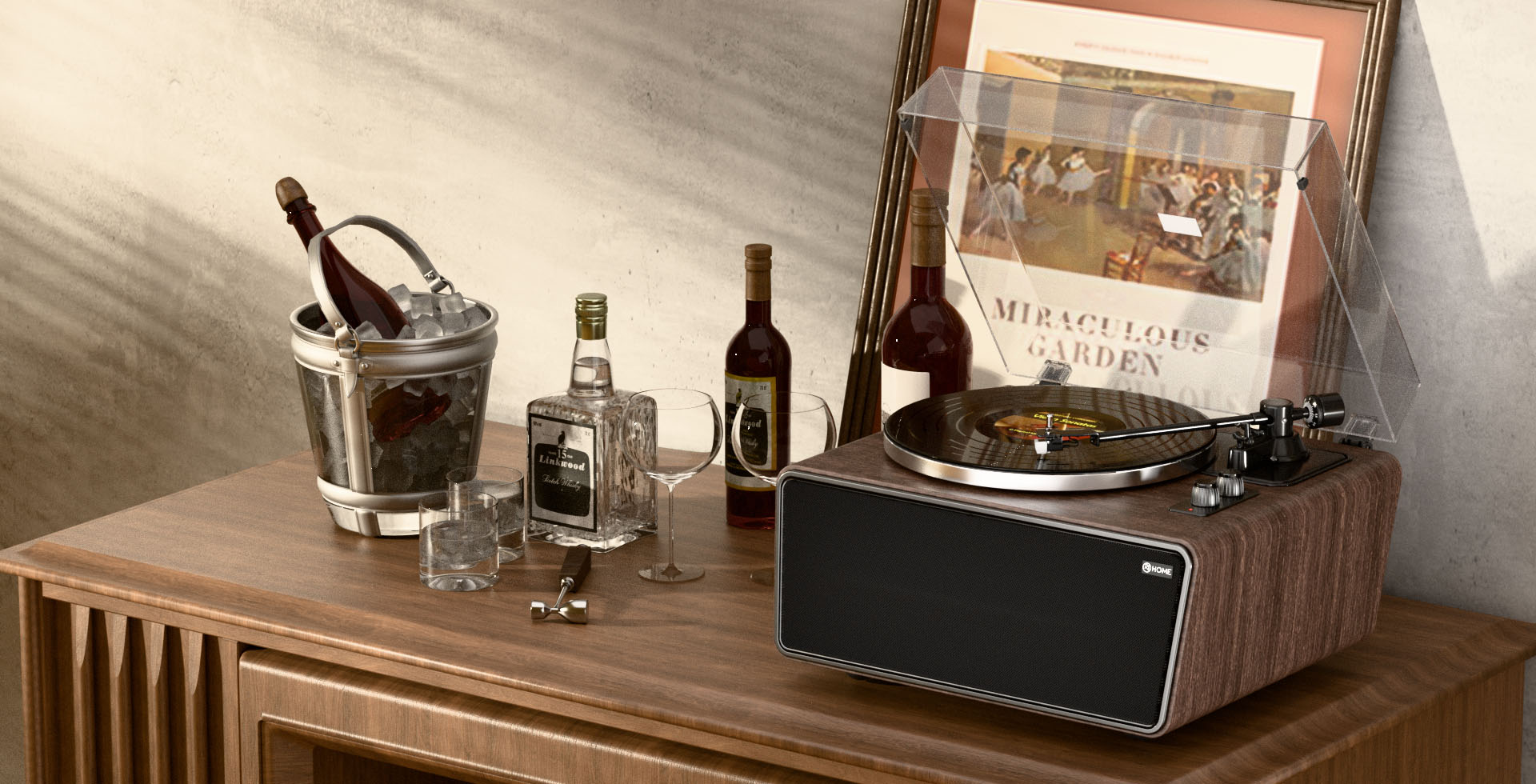The allure of vinyl is strong, and the desire to spin records without breaking the bank is perfectly understandable. The market is flooded with "record players" promising analog bliss for under $100. But as we've discussed before (in "Record Player vs Turntable: Key Differences Explained"), there are fundamental distinctions to be made. When we venture into this ultra-budget territory, we are firmly in the land of "record players" – all-in-one units designed primarily for convenience and low cost, often with significant compromises in performance and build quality.
As an audiophile, my natural inclination is to steer you towards saving a bit more for a proper entry-level "turntable" and component system. Why? Because the foundational principles of good analog playback – stable speed, low vibration, a quality tonearm and cartridge that are gentle on your records – are incredibly difficult to achieve at this price point. However, human nature and practical realities dictate that these sub-$100 players have a place for some. Perhaps it's a gift, a foray into discovering if vinyl is for you with minimal investment, or a way to play some old, non-valuable records for fun.
So, let's not call this a "recommendation list." Instead, let's look at five representative examples or categories of what you'll find under $100, and what you absolutely must know before you buy.
The Sub-$100 Landscape: What You're Really Getting
Before we dive into specific "types," understand the common denominators in this price bracket:
-
Ceramic Cartridges: Most will use a basic ceramic cartridge, often with a conical stylus that tracks heavily (typically 4-6 grams or more). These are less detailed and can cause more record wear over time compared to the moving magnet cartridges found on better turntables. (For a technical breakdown of cartridge types, SoundGuys offers a decent overview).
-
Plastic Tonearms: Lightweight, often lacking adjustments for tracking force or anti-skate. This means you can't optimize playback or minimize wear.
-
Built-in Speakers: Small, underpowered, and housed in the same chassis as the turntable – a recipe for vibration feedback, muddy sound, and potential skipping.
-
Lightweight Construction: Plastic plinths and components offer little isolation from vibration.
-
Questionable Speed Stability: Wow and flutter can be audible, affecting the music's pitch and timing.
With that sobering preface, let's explore the "options."
1. The Ubiquitous Suitcase Player (e.g., Crosley Cruiser, Victrola Vintage 3-Speed)
These are arguably the most popular and recognizable players in this category.
-
The Appeal: Portability, retro aesthetics, wide range of colors, extreme simplicity. They look fun, and they make vinyl seem accessible.
-
The Reality: These embody all the compromises mentioned above. The speakers are tiny, the tonearms are basic, and the tracking force is often high. They are convenient for taking to a friend's house to play some thrift-store finds, but they are not kind to valuable records, nor will they reveal the sonic depth of a well-mastered LP.
-
Our Take: If your primary goal is aesthetic or very casual, occasional playback of records you're not precious about, these fit that niche. Just don't expect hi-fi sound or archival-level record care.
2. The "Desktop" or "Briefcase" All-in-One (e.g., various Jensen models, some ION Audio)
Slightly different form factor than the suitcase, sometimes with a more "component" look, but still an integrated system.
-
The Appeal: Often includes features like AM/FM radio, Bluetooth input, or even a CD player. Seems like a versatile entertainment hub.
-
The Reality: The core turntable mechanism is usually identical or very similar to the suitcase players. The added features often mean even more compromises in the quality of the record-playing components to meet the price point. The speakers, while perhaps marginally larger than in a suitcase model, are still a significant limiting factor.
-
Our Take: The "jack of all trades, master of none" principle applies. If you need a multi-function audio device and record playing is a secondary, casual feature, it might serve. But for focused vinyl listening, the same caveats apply.
3. The "Minimalist" Integrated Player
Some models eschew extra features for a cleaner look, perhaps with slightly better (but still small) separate speakers that connect directly.
-
The Appeal: A cleaner aesthetic, potentially slightly better sound than single-chassis suitcase players due to speaker separation (if only by a few inches of wire).
-
The Reality: While separating the speakers is a step in the right direction to reduce direct vibration feedback, the core turntable components (tonearm, cartridge, motor) are usually still from the same budget bin. Don't expect a night-and-day difference in sound quality or record care.
-
Our Take: A marginal improvement in concept, but likely still hampered by the fundamental quality of the playback mechanism.
4. The "Look, It Has a Counterweight!" (But Does It Really Work?) Player
Occasionally, you might see a sub-$100 player with a tonearm that appears to have an adjustable counterweight.
-
The Appeal: This hints at better quality and adjustability, a feature of "proper" turntables.
-
The Reality: Often, these counterweights are rudimentary, non-functional, or offer a very limited and imprecise range of adjustment. The cartridge will still likely be a basic ceramic model. It's more for show than for precise calibration.
-
Our Take: Don't be fooled by appearances. True tonearm calibration requires precision that's simply not engineered into these units.
5. The "Brand X" Generic Player
Online marketplaces are full of unbranded or obscurely branded record players, often direct from overseas factories.
-
The Appeal: Price, price, price. They might look similar to other budget options.
-
The Reality: Quality control can be even more variable. Support, warranties, and spare parts are often non-existent. You're truly rolling the dice.
-
Our Take: This is the riskiest end of an already risky market segment. Proceed with extreme caution, if at all.
The Elephant in the Room: What About Your Records?
This is the critical, often overlooked, aspect. The combination of heavy tracking force and less-refined styli on most sub-$100 record players can cause accelerated wear on your vinyl. Each play can subtly (or not so subtly) degrade the grooves. If you're playing records that are easily replaceable or hold little sentimental or monetary value, this might be a risk you're willing to take. But if you're starting to collect valuable pressings or cherished LPs, feeding them to such a machine is, frankly, a recipe for disappointment down the line. The Vinyl Factory has a good article discussing how cheap turntables can damage records.
Is There a Better Way? The Path to True Fidelity
At XJ-HOME, our philosophy centers on quality components that respect the music and the medium. While we don't operate in the sub-$100 all-in-one player market, we believe in guiding enthusiasts towards sustainable, rewarding audio experiences.
If your budget is tight, the most sincere advice an audiophile can offer is to save a little longer. A true entry-level turntable (like those from Audio-Technica, U-Turn Audio, or Fluance, often starting in the $200-$400 range when paired with a budget phono preamp and powered speakers or an integrated amp) will offer:
-
A better quality, upgradeable moving magnet cartridge.
-
A tonearm with proper adjustments for tracking force and anti-skate.
-
Better construction and isolation.
-
Significantly better sound and kinder treatment of your records.
This path requires more patience and a slightly higher initial investment, but it lays the foundation for genuine hi-fi sound and protects your growing record collection. You can explore quality source components and system-building ideas at https://xenonjade.com.
Final Spin: Manage Expectations
If a sub-$100 record player is genuinely your only option right now, choose with your eyes wide open. Understand its limitations, use it for casual listening of non-critical records, and don't expect it to be the last word in analog sound or a long-term companion for a serious vinyl collection. It can be a fun, fleeting entry point, but the true magic of vinyl awaits further up the quality ladder.





Leave a comment
All comments are moderated before being published.
This site is protected by hCaptcha and the hCaptcha Privacy Policy and Terms of Service apply.